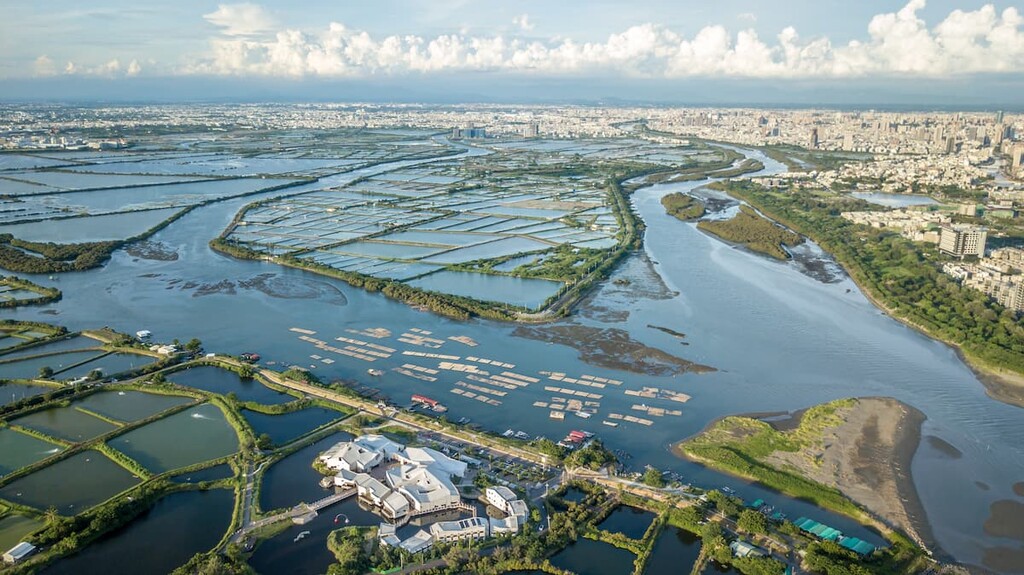Get PeakVisor App
Sign In
Search by GPS coordinates
- Latitude
- ° ' ''
- Longitude
- ° ' ''
- Units of Length

Yes
Cancel
Share ×

Scan the QR code and open PeakVisor on your phone
❤ Wishlist ×
Choose
Delete
Taiwan’s imperial capital and oldest city astounds with its impressive assortment of Buddhist shrines. Dubbed the Kyoto of Taiwan, Tainan City (臺南市) has the highest number of temples. This southern Taiwanese city is primarily flat, with a total number of 231 named mountains. The highest hill is Dadongshan (大棟山), measuring 1,245 meters (4,085 ft), while the most prominent peak is Sanjiaonanshan (三角南山) at 1,187 meters (3,894 ft).
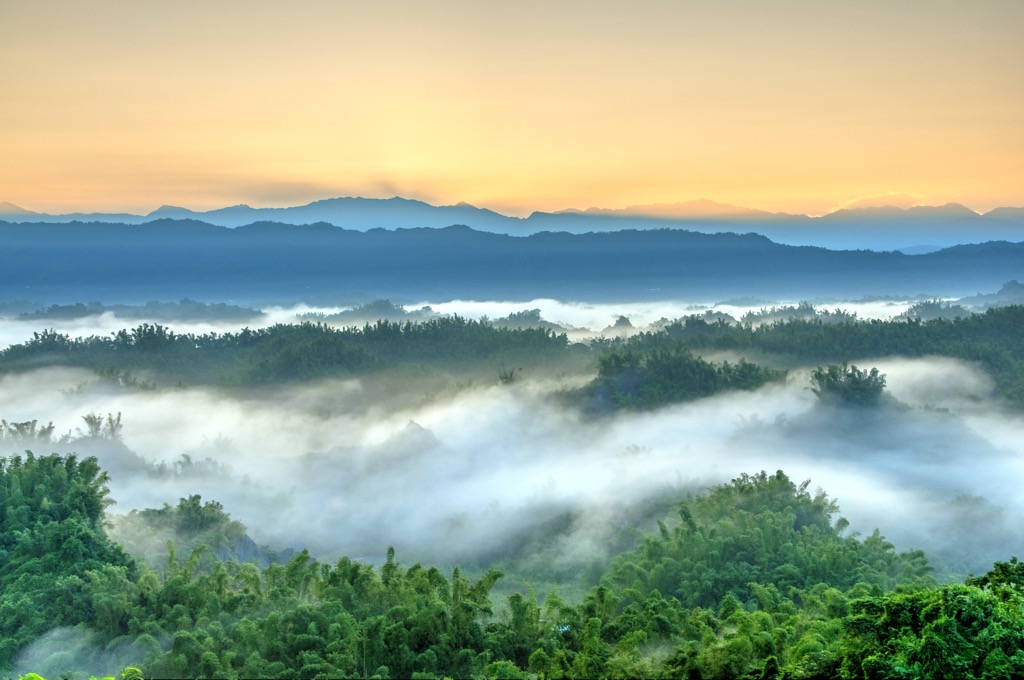
Taiwan's ancient capital lies between Chiayi County (嘉義縣) and Kaohsiung City (高雄市) and is Taiwan's fifth largest city with 1,8 million residents. In addition, Tainan City covers a substantial area of over 219,165 ha (541,569 ac).
Essentially low-lying and shallow, Tainan City's terrain is primarily affected by the Jianan Plain (嘉南平原) that extends south into this southern Taiwan hub. The western coastal area is gentle, with little elevation in the landscape. As the land progresses eastwards, Tainan's hills begin to rise in height.
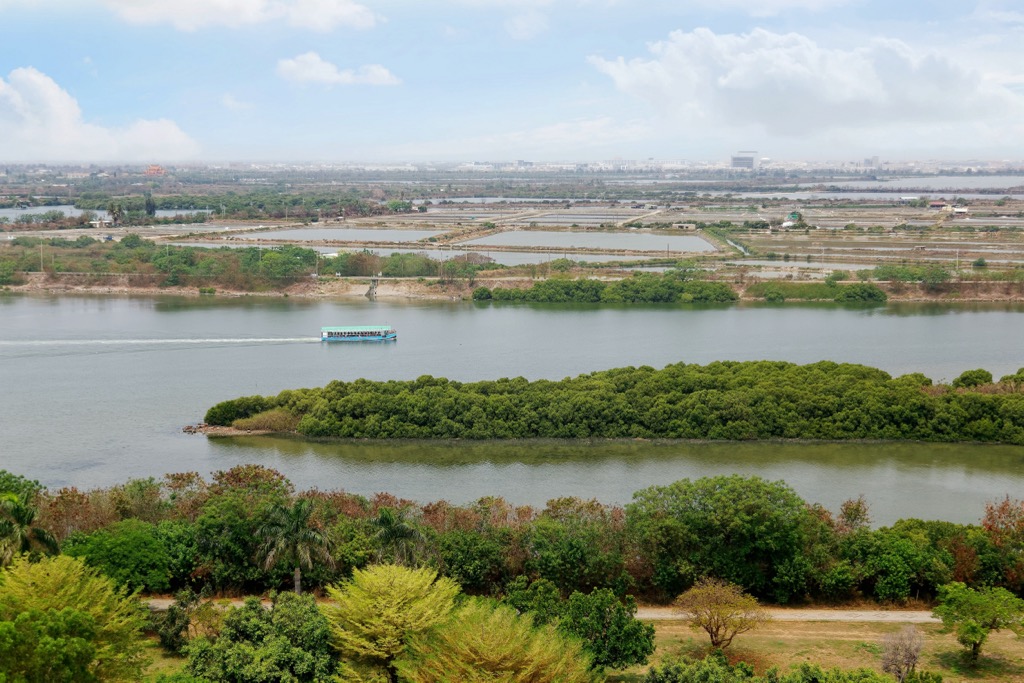
Taiwan's western plains are a nurturing environment for farming communities' crops to thrive. Houbi District (後壁區) is one of Taiwan's largest rice cultivators. Guava, melon, and mango also flourish in Tainan's farming fields. Another agricultural zone benefiting from the flatlands is Jingzijiao Wapan Salt Fields (井仔腳瓦盤鹽田). The level area transformed into a manufactured salt mine, an effort created by adding brine for the crystals to solidify.
You'll hardly feel chilly in Tainan with its humid subtropical climate and nearly non-existent winters. With February temperatures averaging 75°F (24°C) during the day, wintertime is quite pleasant compared to summertime's 91°F (33°C) mean. However, like most of Taiwan, Tainan is not immune to tropical typhoons that bring heavy rain and wind and usually cause wreckage in the city.
Locals not only enjoy the weather but Tainan City's sublime nature. Taijiang National Park (臺江國家公園) is on Tainan City’s west coast. The popular mountain retreat of Guanziling Hot Springs (關子嶺溫泉) sits north, with the established Chimei Museum in the south. To the west is the Tianan Zuojhen Fossil Park (臺南左鎮化石園區).
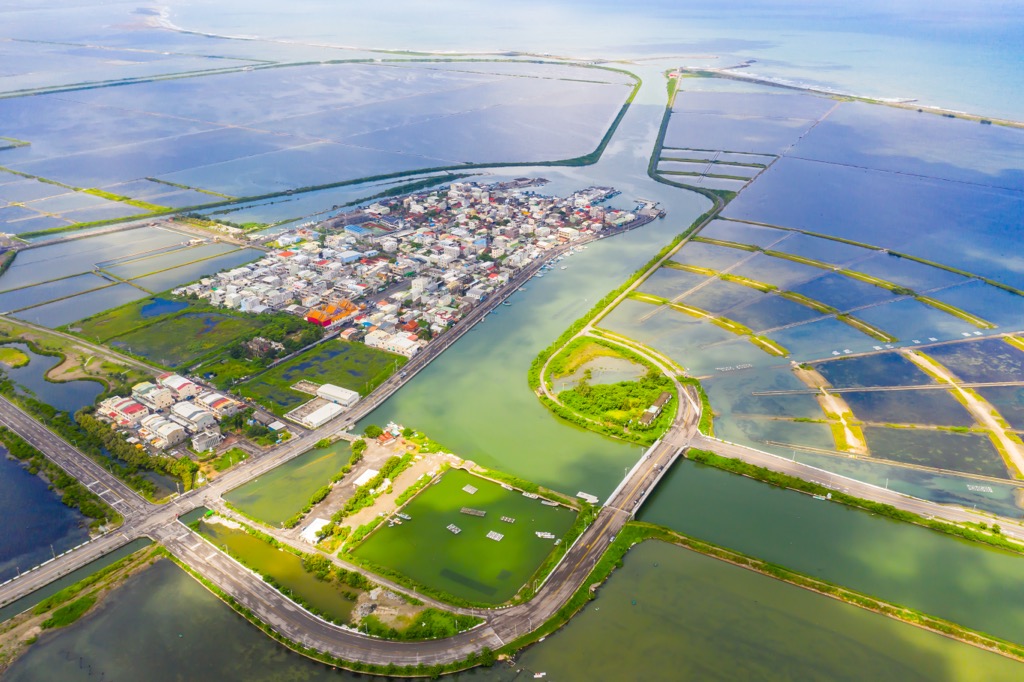
Taiwan’s west coast is predominantly flatter compared to the east coast and Taiwan’s center. Known as Taiwan’s spine, the Central Mountain Range (中央山脈) draws a linear passage from southern Pingtung County (屏東縣) to the shores of Yilan County (宜蘭縣)

Near to the Central Mountain Range, the Yushan Range (玉山山脈) circulates with its massive peak, Yushan (玉山). A less intense sierra lingers close to Yushan, the Alishan Range (阿里山山脈). Nearer to Taiwan’s west coast, the Alishan Range holds a hilly network of more shallow hills. Focused mainly around the higher peaks of Alishan Township, the tallest hills also belong to Alishan National Forest (阿里山國家森林遊樂區).
Tainan City mountains are a south-western extension of the Alishan Range. The hills taper in elevation the further they lie from Alishan National Forest. The rock comprises the Pliocene epoch’s mixture of sand, mud, and shale.
The coastal Taijiang National Park is a flourishing environment of mangrove trees and aquatic plants. Seashore paspalum, chaff flower, and river tamarind are some of the thriving water plants.

Along Tainan’s coastal windbreak forest, other aquatic flora like beefwood, Cuban bast, and black nightshade are hardy plants that grow in extremely windy conditions.
While in inner Tainan City in the east, a vibrant broad-leaf community lies in its remote hills. The tung tree, camphor, acacia and plum trees are some deciduous arboreals that flourish in the undulating environment.
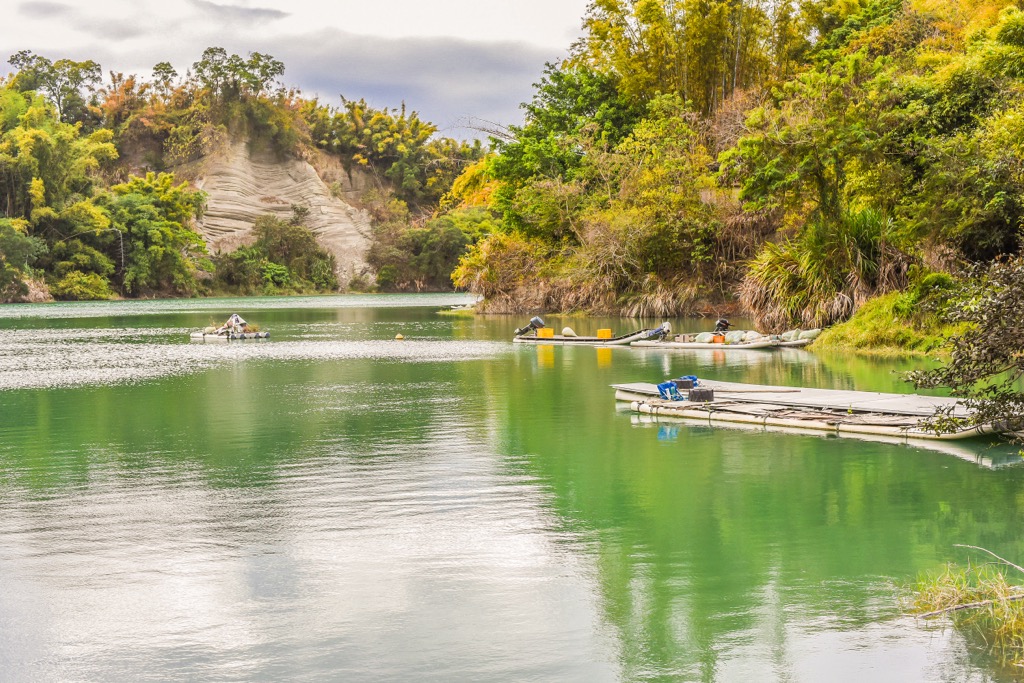
Tainan City’s earliest inhabitants were the Pingpu and Dawelong tribes. Residing in Tainan’s plains and the Zengwen River’s (曾文溪) midstream, these people lived here 300 to 400 years ago.
As with the influx of Han settlers in the 17th century, Tainan City received its handful of immigrants in the early 1600s. At this time, the Dutch built Fort Zeelandia in Tainan, which was to become the headquarters of the Dutch East India Company. They subsequently subdued Tainan’s indigenous people through hostile attacks to obey their governance. Thus, in 1924, they rose to power.
Their reign lasted nearly four decades until Fujian’s Koxinga sailed across the seas to brave the ruling government. The Battle of Koxinga ensued in 1662, with bloodshed where the Dutch fled for their safety, granting Koxinga and his 25,000 soldier troop victory over Taiwan.
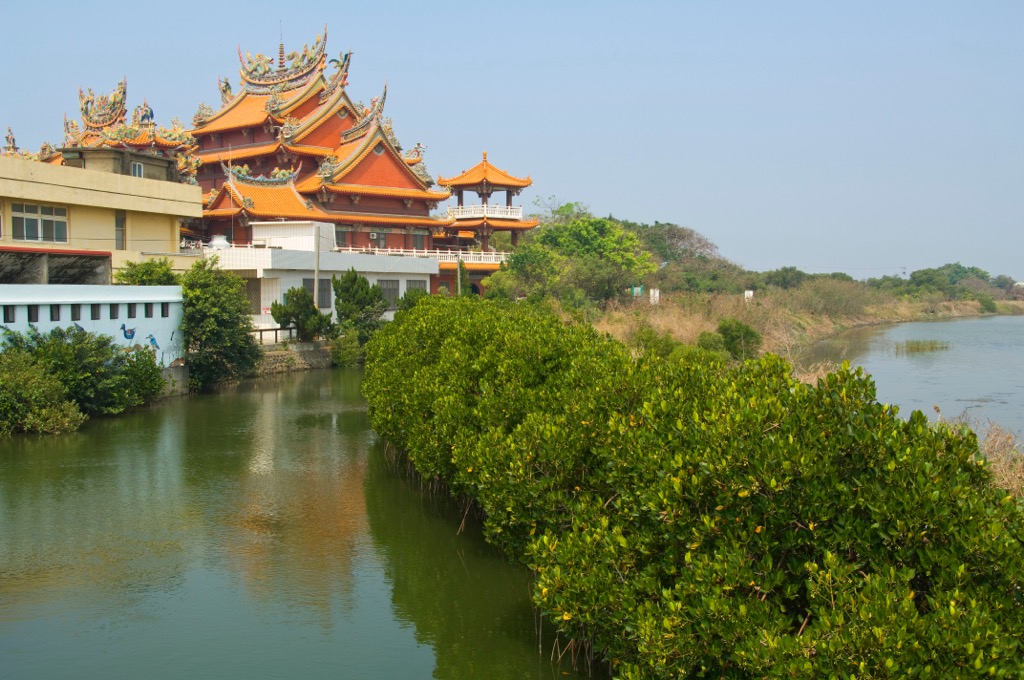
Tainan City became a Ming loyalist compound following Koxinga’s rule, and temples began to pop up around the city. After Koxinga’s ruling son’s death, a power struggle ensued between the Ming and Qing loyalists in Tainan. The blood-thirsty Qing troops scared the Ming followers into submission, gaining control of Tainan and granting it a capital status in Taiwan.
Tainan succumbed to the Japanese like the rest of Taiwan in 1895, a period known as the Japanese Occupation Era. During this time, Tainan was the capital of the Tainan Prefecture, including present-day Yunlin (雲林縣) and Chiayi counties. Due to its important status, the Japanese built modern infrastructure and constructed schools, courthouses, and administrative buildings.
Once the Republic of China (ROC) regained control of its land, Tainan City’s borders were realigned, forming its present-day divisions and districts.
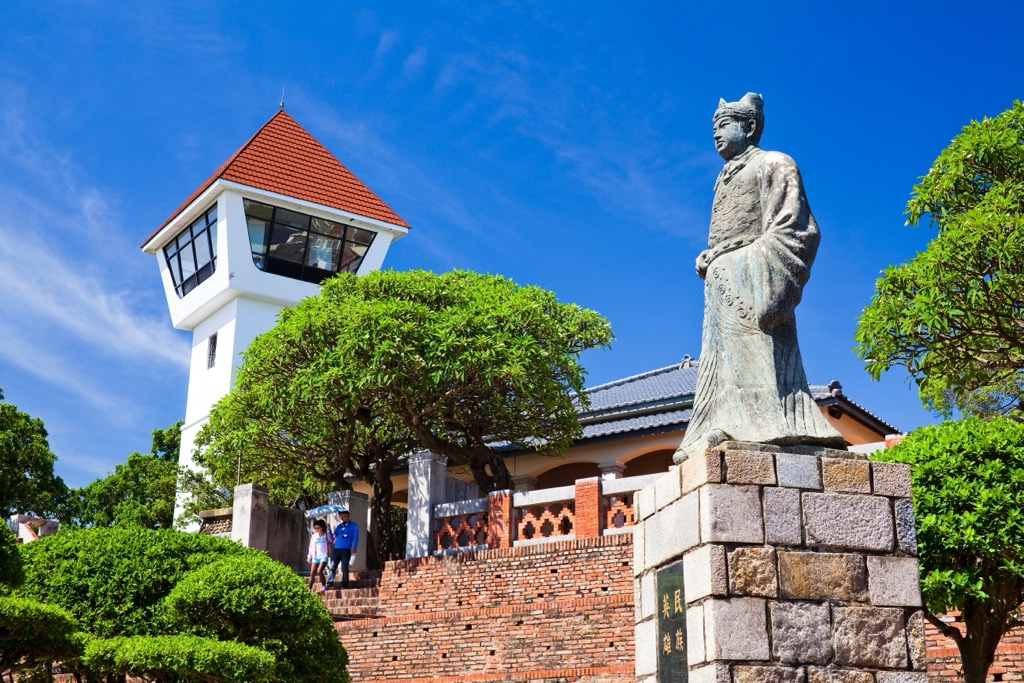
The most desirable hiking trails and areas in Tainan City are:
Delve into nature through a mangrove tunnel at Taijiang National Park, Taiwan’s only wetland national park. The Sicao Mangrove Green Tunnel (四草紅樹林綠色隧道) is an overarching wetland forest framing the aquamarine canal. Enchanting and picturesque, tourists flock to see this beautiful sight.
You can board a boat at Taijiang National Park for tours of the emerald passage. Mangrove branches extend over the water, so watch your head and duck in time to miss a face plant. Look out on the banks for crawling fiddler crabs, churning the soil with their giant claw.
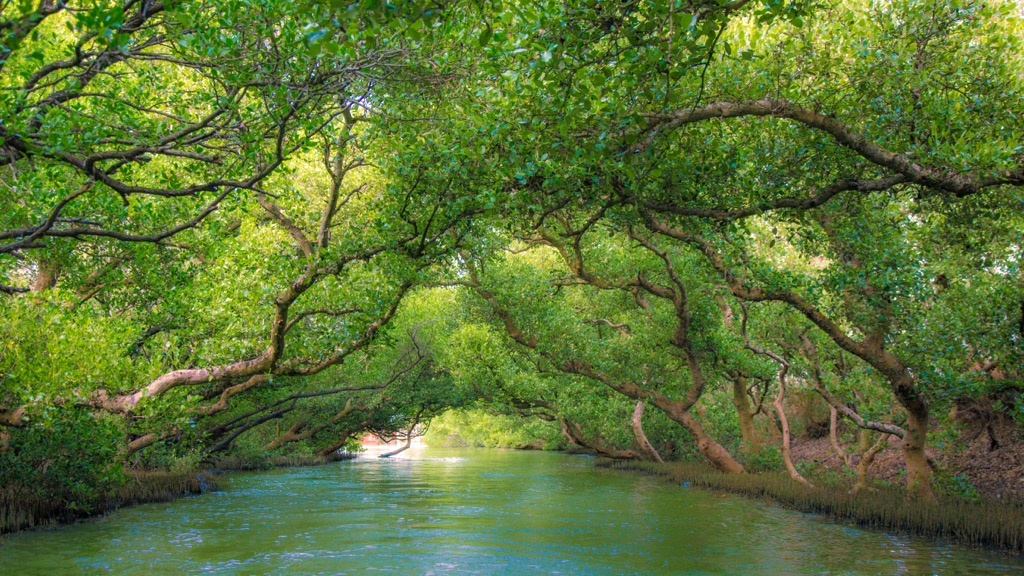
Another well-known spot of Taijiang National Park is the Black-faced Spoonbill Reserve (黑面琵鷺野生動物保護區). These migratory and rare bird species fly towards southern Taiwan’s warmer climate during the winter. At least 3,000 black-faced spoonbills occupy the sanctuary on the Zengwen River, attracting bird enthusiasts and curious locals.
Visitors observe these elegant creatures from the bird-watching pavilion, usually with binoculars in tow. Resembling a swan, albeit shorter, smaller, black-faced spoonbills have a rounded beak. The flush of white feathered birds against the marine blue waters is a stirring sight.
Head to Tainan’s northern hills for a steaming mud bath at Guanziling Hot Springs. This mountainside thermal bath is a popular retreat for Tainan locals wishing to escape for a quiet weekend in lush greenery.
Although more accessible to Chiayi City (嘉義市), Tainan’s Guanziling Hot Springs is a must-see when visiting Taiwan’s ancient capital. Surrounded by leafy hills, the scenery of luscious broadleaf groves and bamboo forests is mesmerizing.
The muddy spring has salt and sulfur content, creating a mineral bath that moistens your body and aids any skin irritations. Once you’ve soaked at the warm muddy spa, you can head to the nearby trails to explore Guanziling’s natural beauty.
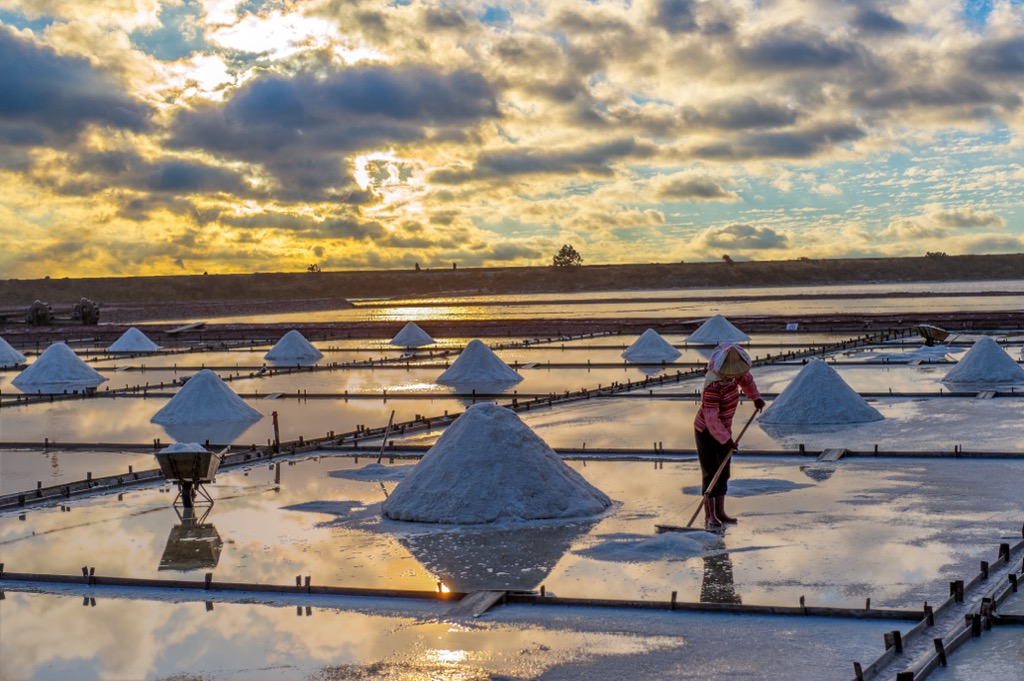
Climb Tainan’s highest peak, set in the northern mountains bordering Chiayi County. Located close to Guanziling Hot Springs, you can extend your thermal bath visit with a stroll in the hills.
Admire the flourishing subtropical broadleaf forest of plum trees and acacia. In wintertime, plum blossoms erupt in blushing shades of pink, a delicate adornment to the forest. Shrilling birdsong reverberates in the lush environment, sung by common mid-elevation birds, such as the Chinese bamboo partridge and the crown feather thrush.
From Dadongshan’s summit, a panoramic view of vast greenery and nature lies before you. Guanziling’s encircling hills of Zhentou Shan (枕頭山), Hutou Shan (虎頭山), and Jilong Shan (雞籠山) cradle around you. You can observe the Jianan Plain extending into Chiayi County and nearby Lantan Lake’s (蘭潭水庫) waters reflecting the Taiwan skies.
For sublime views over the Jianan Plain, tackle the Kantou Mountain Trail. Situated near Dadongshan, Kantou Mountain Trail is a great extension to a day of hiking in Tainan.
Ascend the wooden boardwalk paths that line the hill’s gradient. As you gain elevation, you’ll begin to view the Zengwen Reservoir (曾文壩) deep azure waters. In fact, with pockets of lakes nearby, you’ll notice the Wushantou (烏山頭水庫) and Jianshan (尖山埤水庫) ponds in the south and the northern Baihe Pool.
Known for its diverse plant life, revel in greenery as you progress along the mountain. The ecological environment comprises a 4 ha (10 ac) camphor forest and 400 plant species from ferns, vines, and coffee plants.
Every November, Dongshan District (東山區) hosts a coffee festival, a well-supported event in Tainan. Outdoor enthusiasts love to couple the fair with a trek up Kantou Shan (崁頭山) for the wispy late autumn clouds and stunning views over low-lying Tainan and Chiayi.
If you want to witness Taiwan’s hills extend to greater heights, visit the Liuyi Mountain Trail. Here, the Central Mountain Range’s hills begin to gain intensity as they rise towards Taiwan’s center.
Set in Tainan’s westernmost region, bordering Kaohsiung City’s hill, walk the ancient paths of the Japanese Occupation Era. Admired for its seasonal beauty, Liuyi Mountain Trail’s flora flourishes year-round. Plum blossoms bloom in winter, with springtime awash with peach and tung flowers. Hydrangeas grow in summer, with chrysanthemum blooms in autumn.
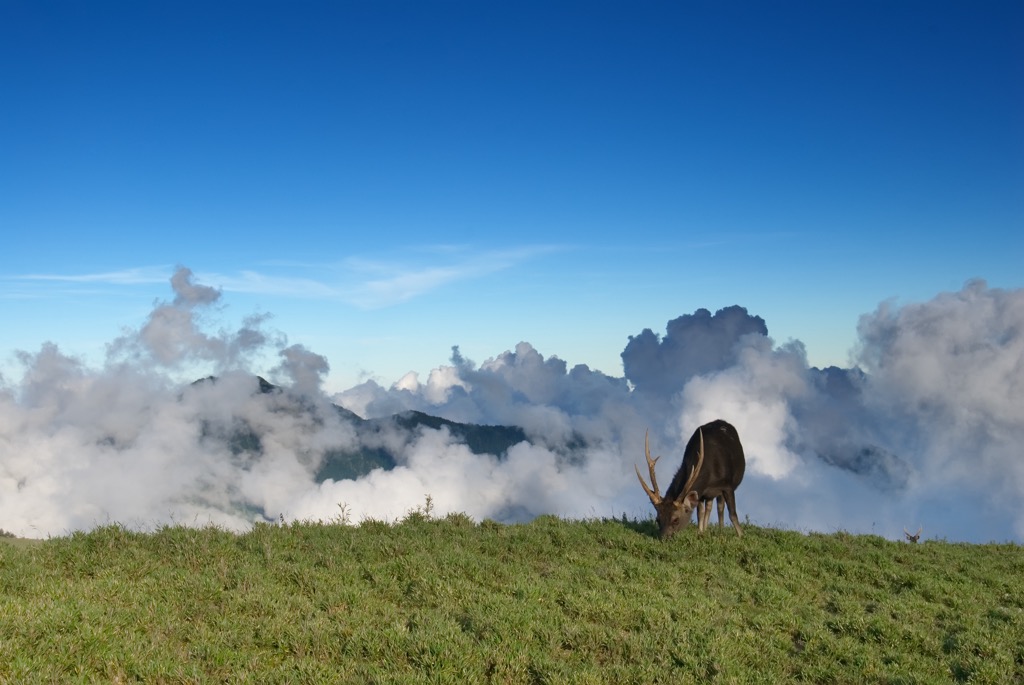
Tread carefully as Taiwan sambar deer graze on the hilly meadows. The leafy forest tracks are also alive with butterflies and birdlife, and you may spot an eagle soaring above in the skies.
The outlooks are generous, as you can observe Alishan’s hills in the north and the Central Mountain Range trail towards inner Taiwan. You’ll also have a wonderful view of the extensive Nanhua Reservoir (南化水庫) from the mountain path.
Venture into Tainan’s remote inland for an adventure through the forest trails. From the ornate Tianyan Temple (天艷宮), climb Yuding Trail’s stone steps that steeply ascend the hill.
A fruity grove of 100-year-old moon orange trees shelters the dense path. These century-old arboreals stand thick and tall from years of growth. Inhale the fresh jasmine and the floral scents from hibiscus, mimosa, and wild ginger as you pass them by.
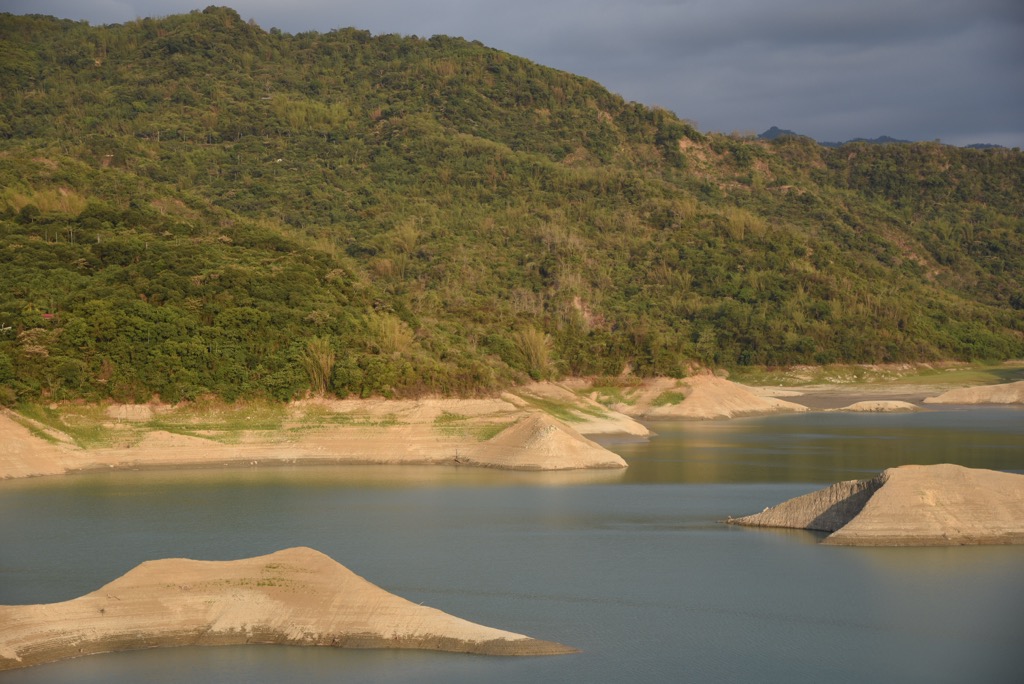
Enjoy the peaceful meander through the lush woodlands as butterflies cross your path and insects chirp among the foliage. In the clearings, admire the serene prospects of Nanhua Lake surrounded by emerald, hilly beauty.
Taian City comprises 37 districts in its large area. It’s recommended to stay closer to Tainan's center, in the East, North, West, South, and Anping districts. Of these, the two best neighborhoods for history, culture, and natural beauty are Anping District (安平區) and North District (北區).
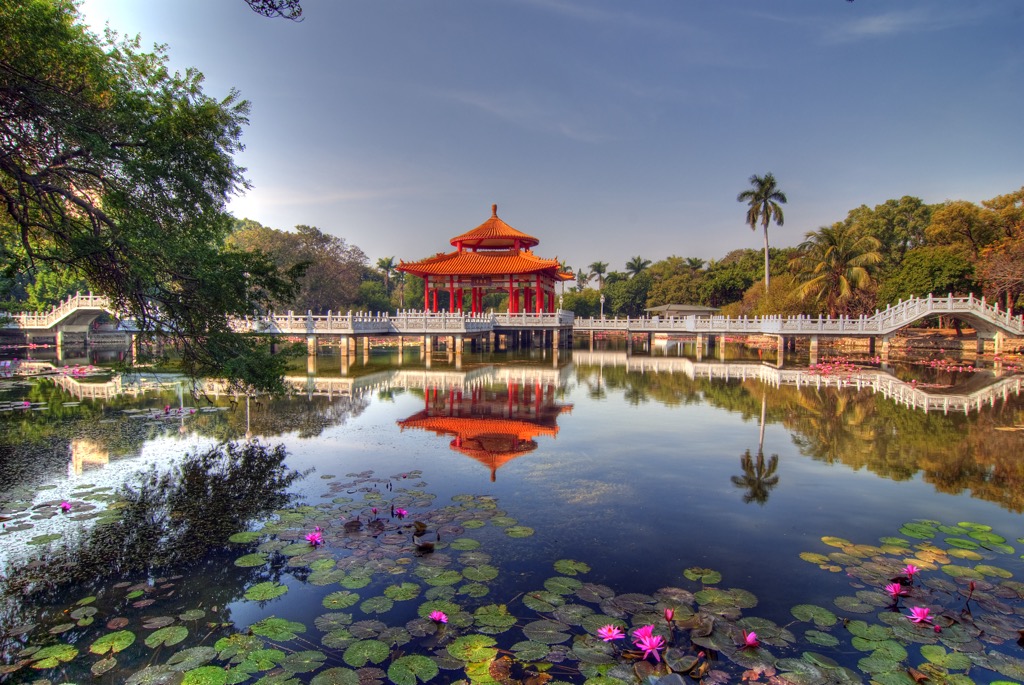
One of Tainan’s oldest areas, Anping, dates back to the 17th century upon the arrival of the Han settlers. Certain streets in Anping retain their ancient aesthetic, well-preserved by Tainan authorities. To visit Tainan’s historical sites, Anping is the answer.
Visit Taiwan's prominent historical fortress, Anping Old Fort (安平古堡). Once known as Fort Zeelandia, this was a Dutch East India Company stronghold, the headquarters of their Taiwan governance. Inside the stone walls is a beautifully landscaped area of banyan trees and a museum showing the treaty signed between Koxinga and the Dutch.

The picturesque Anping Treehouse (安平樹屋) reminds us how nature always wins, as a banyan tree thrives in an old derelict warehouse. Aerial roots wrap around the walls in branch layers, while the tree stands tall through the open roof. It's a fascinating sight to see nature's otherworldly transformation in the crumbling building.
Wander through the narrow passage of Shennong Street (神農街). Tainan's old market road once led to the city's five-channel river ports. A busy thoroughfare during the Qing dynasty, Shennong Street was alive with merchants trading their goods. Today, the old road now contains curiosity shops, but it retains its charming aesthetic of wooden slatted facades and wrought-iron railings.
Upon your train arrival in Tainan, you’ll first encounter the North District as you exit the station. Tainan’s bustling heart, the North District is where you’ll find all the action. It's an extraordinary welcome to Tainan City.
Set fire to your senses at Tainan’s main street, Beimen Road (北門路). Soak in the hustle and bustle of scooters zipping about and admire the happy mess of colorful roadside billboards hovering off the side of buildings. In the shopping district of Tainan, there is plenty to see from bookstores, street food vendors, clothing boutiques, and boba tea cafes.

Find out why Tainan is considered to be Taiwan’s food capital by tasting southern Taiwan cuisine at the Flower Night Market (台南花園夜市). Take a bite of coffin bread, a thickly cut sandwich filled with seafood chowder in the middle. Sample some boneless milkfish, a name evoking curiosity. Locals love this sweetly salty treat with a mixture of fish and milk with a hint of citrus. Another Tainan speciality is Danzai noodles, a blend of oil noodles in a meaty broth with minced pork and bean sprouts and topped with shrimp.
Finally, admire the lushly landscaped beauty at Tainan Park. Despite lying off the main road, Tainan Park is a peaceful emerald grove of tropical flora. The park’s centerpiece is the Nian Ci Pavilion, surrounded by the tranquil Swallow Lake. An ornate footbridge leads to the picturesque shrine and links to the lake’s other side. Walking among the shade of the trees and reveling in the park’s serenity makes a worthwhile trip.
From Taiwan’s major cities, board the Taiwan High-Speed Rail (HSR) or local express train (TRA) to Tainan City. The local express train station is in Tainan’s central North District, but the HSR Station is further away. You can take the Taiwan High-Speed Rail bus from the station to the Tainan City Hall in Anping District.
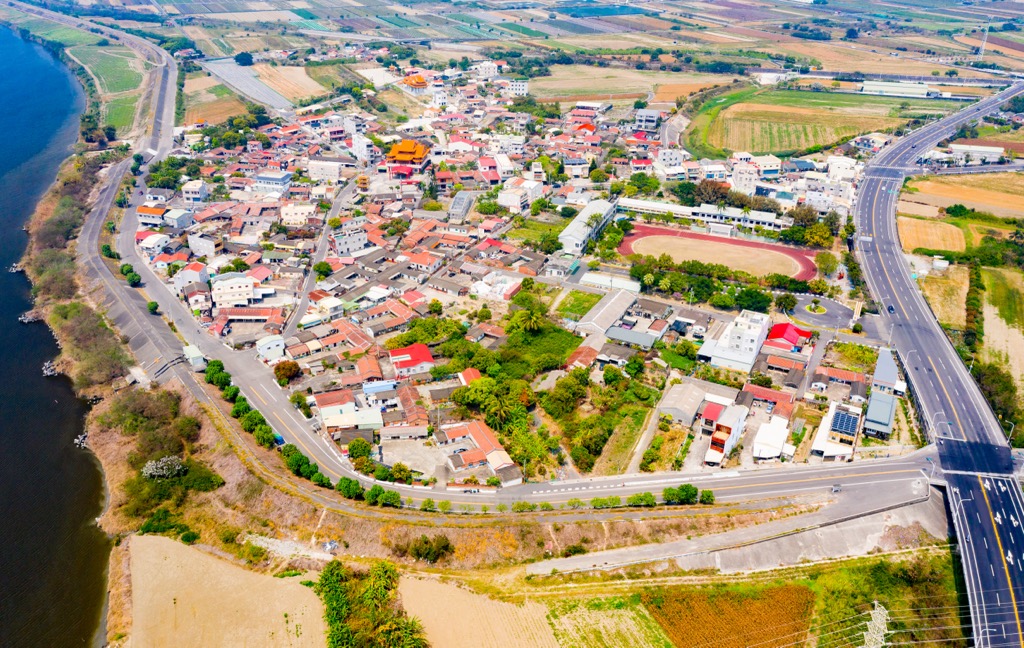
Explore Tainan City with the PeakVisor 3D Map and identify its summits.
